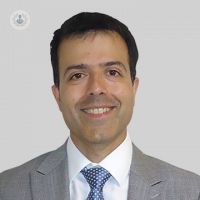Tonsillectomy in adults and children
Written by:When is a tonsillectomy necessary? How does it work? Does the procedure differ between adults and children? We spoke to distinguished London ear, nose and throat surgeon Mr Paul Chatrath to find out the answers:

What is a tonsillectomy?
The tonsils are lymph glands situated at the back of the throat. They are part of the immune system and therefore help to fight infection. A tonsillectomy is an operation to remove the tonsils.
When is a tonsillectomy necessary?
Acute tonsillitis occurs when the tonsils become infected. This usually requires treatment in the form of antibiotics and pain relief.
If the tonsillitis does not settle and becomes chronic, or if the attacks of acute tonsillitis occur many times a year, then it may be necessary to remove the tonsils to prevent the problem from returning.
Is tonsil removal a big surgery?
Surgery to remove the tonsils (tonsillectomy) is generally a straightforward operation, almost always undertaken as a day case procedure under a general anaesthetic.
The risks include:
- pain during the recovery period
- the possibility of infection
- bleeding in some cases
- in rare cases, taste disturbance
However, most people do not suffer these consequences.
What happens during a tonsillectomy?
After you have been given a general anaesthetic to put you to sleep, you will be taken to the operating theatre where the final preoperative checks will be carried out. Then the operation will commence.
There are several different methods used to remove the tonsils. The traditional techniques include using surgical instruments and/or diathermy (heat generated by an electrical current), although in recent years coblation radiofrequency tonsillectomy has also gained popularity as it involves using a less invasive treatment at a much lower temperature. Depending on how the coblation technique is used, this can lead to less postoperative pain and a faster recovery.
Is an adult tonsillectomy the same as a tonsillectomy in children?
In principle the actual surgery differs little between adults and children, in that the same types of surgical techniques can be used to remove the tonsils.
The main difference is that adult tonsils tend to be more inflamed and scarred than those in children, mainly due to the increased number of attacks of tonsillitis that adults have had compared with children. This increases the amount of scarring that occurs after the surgery, which in turn increases the pain and duration of recovery that adults experience.
The success rates are however very much the same between adult and paediatric tonsillectomy.
Learn more about different types of tonsillectomy
How long is the recovery post-tonsillectomy?
After the operation, you will go back to the ward where you will be monitored for 4-6 hours, then you will be allowed to go home.
It is important to take your painkillers exactly as prescribed, as this will help you to eat and drink regularly. Eating as normal a diet as possible is crucial as this helps to keep the back of the throat clean and to avoid the build-up of debris, which in turn reduces the risk of infection and bleeding. It is quite normal for the recovery to be quite painful, and for the pain to get worse over the course of 5-10 days before it gets better again.
The total recovery time is usually complete within 2 weeks, often a little quicker in children and if the coblation technique has been used.


